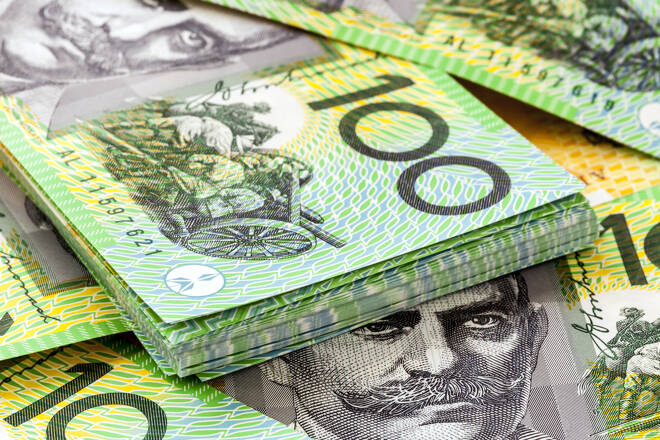Advertisement
Advertisement
AUD to USD Forecast: Aussie Navigates China’s Shadow and US Economic Indicators
By:
Amidst global economic shifts, the Australian Dollar's journey mirrors investor sentiments on China and RBA's potential pause.
Highlights
- AUD/USD dips to $0.64017 Monday, despite the PBoC Loan Prime Rate decisions going unnoticed.
- China remains the focal point today, with hopes of a significant stimulus package lingering.
- The US housing market in July hints at a US economic health check, with all eyes on existing home sales.
Monday Overview
On Monday, the AUD/USD slipped by 0.02% to end the session at $0.64017. After a mixed start to the day, the Australian dollar rose to a high of $0.64214 before falling to a low of $0.63870. The losses resulted from Fed uncertainty, the PBoC Loan Prime Rate decisions, and more silence on a significant stimulus package.
No Escaping China as the Markets Price in an RBA Pause
It is another quiet session on Tuesday, with no economic indicators from Australia or China to move the dial. The lack of economic indicators will leave China in focus. After the Loan Prime Rate decisions, there is lingering hope of a more meaningful stimulus package to boost growth and mitigate contagion.
However, more silence will likely leave the Australian Dollar on a bearish trajectory over the nearer term. With the markets expecting the RBA to stand pat in September, the direction for the AUD/USD will also hinge on the Fed.
US Existing Home Sales Need a Watchful Eye
After a quiet start to the week, US existing home sales numbers for July will draw interest. The US housing market remains a litmus test of the US economy. A Fed-fueled deterioration in housing sector conditions could raise the threat of a slump in US consumption and reignite fears of a US recession.
Increased supply, falling existing home sales, and a downward trend in home prices would adversely impact consumer confidence. In turn, consumers would tighten the purse strings, easing demand-driven consumer inflationary pressure.
However, the US services sector accounts for circa 70% of the US economy, exposing the US economy to a marked deterioration in consumer sentiment and spending. A contraction across the services sector would force the Fed to hit the brakes and bring forward discussions on a first interest rate cut.
Considering the uncertainty surrounding the September Fed interest rate decision, FOMC member commentary also needs consideration. FOMC member Tom Barkin is on the calendar to speak today. In June, Barkin talked about waiting for the haze to clear before deciding on more rate hikes. A committed policy outlook would draw interest.
AUD/USD Price Action
Daily Chart
The Daily Chart showed the AUD/USD hover below the $0.6430 – $0.6450 resistance band. Significantly, a ten-day losing streak left the Aussie below the 50-day and 200-day EMAs, sending bearish near and longer-term price signals.
Looking at the 14-Daily RSI, 30.10 reflects bearish sentiment. The RSI aligns with the EMAs, signaling a return to sub-$0.64 to bring the $0.6340 – $0.6320 support band into play. However, avoiding sub-$0.64 would give the bulls a run at the $0.6430 – $0.6450 resistance band.
4-Hourly Chart
Looking at the 4-Hourly Chart, the AUD/USD remains below the $0.6430 – $0.6450 resistance band. The extended bearish trend leaves the AUD/USD below the 50-day and 200-day EMAs, affirming bearish near and longer-term price signals.
Looking at the 14-4-Houly RSI, 46.50 also reflects a bearish sentiment, with selling pressure overweighing buying pressure. The RSI aligns with the EMAs signaling a return to sub-$0.64 to bring the $0.6340 – $0.6320 support band into play. However, a move through the lower level of the $0.6430 – $0.6450 resistance band would give the bulls a run at the 50-day EMA.
About the Author
Bob Masonauthor
With over 28 years of experience in the financial industry, Bob has worked with various global rating agencies and multinational banks. Currently he is covering currencies, commodities, alternative asset classes and global equities, focusing mostly on European and Asian markets.
Advertisement
